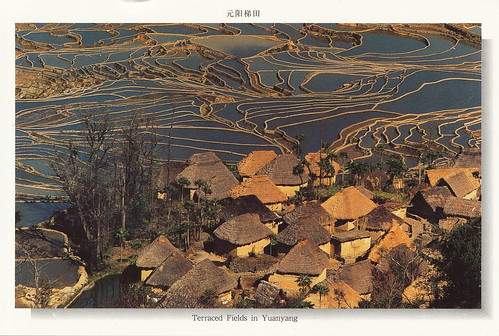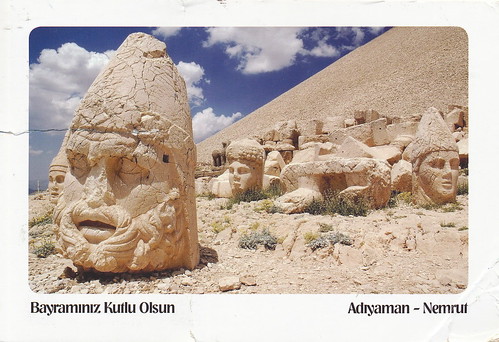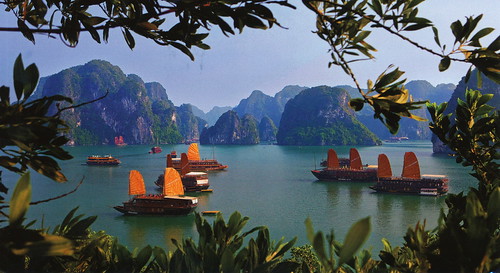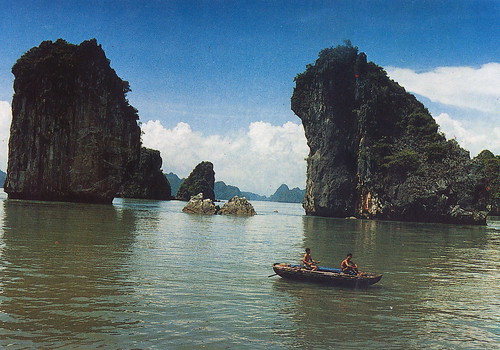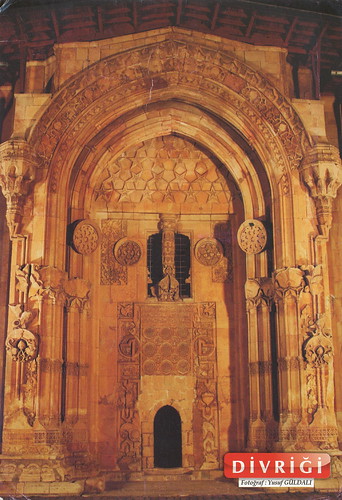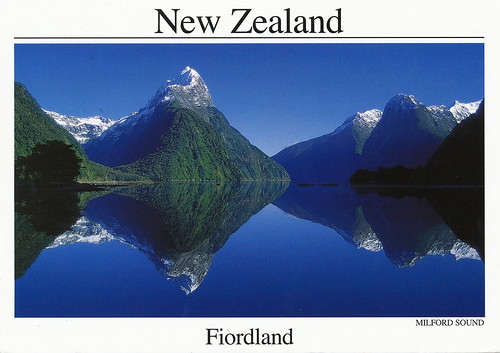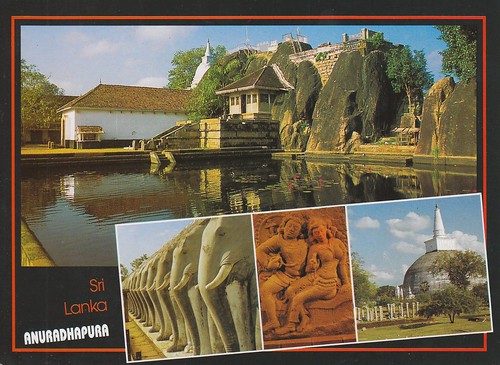The Cultural Landscape of Honghe Hani Rice Terraces, China covers 16,603-hectares in Southern Yunnan. It is marked by spectacular terraces that cascade down the slopes of the towering Ailao Mountains to the banks of the Hong River. Over the past 1,300 years, the Hani people have developed a complex system of channels to bring water from the forested mountaintops to the terraces. They have also created an integrated farming system that involves buffalos, cattle, ducks, fish and eel and supports the production of red rice, the area’s primary crop. The inhabitants worship the sun, moon, mountains, rivers, forests and other natural phenomena including fire. They live in 82 villages situated between the mountaintop forests and the terraces. The villages feature traditional thatched “mushroom” houses. The resilient land management system of the rice terraces demonstrates extraordinary harmony between people and their environment, both visually and ecologically, based on exceptional and long-standing social and religious structures.
Year of Inscription: 2013
further Informations: http://whc.unesco.org/en/list/1111
18/11/2013
16/11/2013
Turkey - Nemrut Dağ
The mausoleum of Antiochus I (69–34 B.C.), who reigned over Commagene, a kingdom founded north of Syria and the Euphrates after the breakup of Alexander's empire, is one of the most ambitious constructions of the Hellenistic period. The syncretism of its pantheon, and the lineage of its kings, which can be traced back through two sets of legends, Greek and Persian, is evidence of the dual origin of this kingdom's culture.
Year of Inscription: 1987
further Informations: http://whc.unesco.org/en/list/448
Year of Inscription: 1987
further Informations: http://whc.unesco.org/en/list/448
15/11/2013
Viet Nam - Ha Long Bay
Ha Long Bay, in the Gulf of Tonkin, includes some 1,600 islands and islets, forming a spectacular seascape of limestone pillars. Because of their precipitous nature, most of the islands are uninhabited and unaffected by a human presence. The site's outstanding scenic beauty is complemented by its great biological interest.
Date of Inscription: 2000
further Informations: http://whc.unesco.org/en/list/672
Date of Inscription: 2000
further Informations: http://whc.unesco.org/en/list/672
Turkey - Great Mosque and Hospital of Divriği
This region of Anatolia was conquered by the Turks at the beginning of the 11th century. In 1228–29 Emir Ahmet Shah founded a mosque, with its adjoining hospital, at Divrigi. The mosque has a single prayer room and is crowned by two cupolas. The highly sophisticated technique of vault construction, and a creative, exuberant type of decorative sculpture – particularly on the three doorways, in contrast to the unadorned walls of the interior – are the unique features of this masterpiece of Islamic architecture.
Year of Inscription: 1985
further Informations: http://whc.unesco.org/en/list/358
Year of Inscription: 1985
further Informations: http://whc.unesco.org/en/list/358
23/09/2013
Algeria - Tassili n'Ajjer
Date of Inscription: 1982
further Informations: http://whc.unesco.org/en/list/179
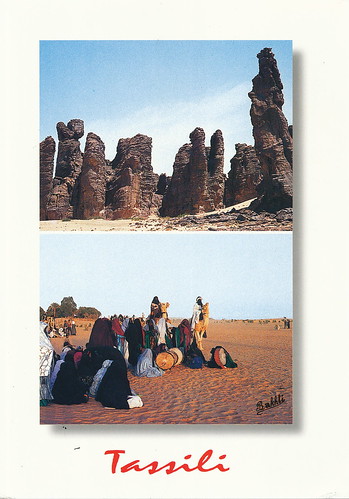 |
| DZ-4197 |
 |
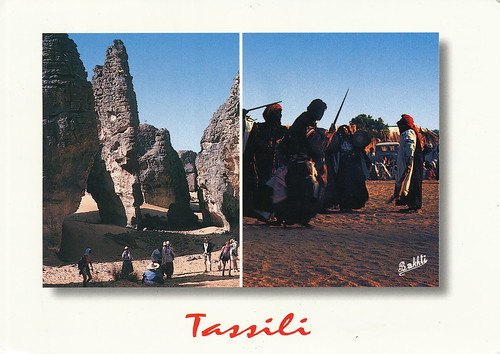 |
| private swap with razmi |
22/09/2013
Korea, Republic of - Jeju Volcanic Island and Lava Tubes
Jeju Volcanic Island and Lava Tubes together comprise three sites that make up 18,846 ha. It includes Geomunoreum, regarded as the finest lava tube system of caves anywhere, with its multicoloured carbonate roofs and floors, and dark-coloured lava walls; the fortress-like Seongsan Ilchulbong tuff cone, rising out of the ocean, a dramatic landscape; and Mount Halla, the highest in Korea, with its waterfalls, multi-shaped rock formations, and lake-filled crater. The site, of outstanding aesthetic beauty, also bears testimony to the history of the planet, its features and processes.
Date of Inscription: 2007
further informations: http://whc.unesco.org/en/list/1264
 |
| Unescoswap - lemontree |
Czech Republic - Holašovice Historical Village Reservation
Holašovice is an exceptionally complete and well-preserved example of a traditional central European village. It has a large number of outstanding 18th- and 19th-century vernacular buildings in a style known as 'South Bohemian folk Baroque', and preserves a ground plan dating from the Middle Ages.
Date of Inscription: 1990
further Informations: http://whc.unesco.org/en/list/861
Date of Inscription: 1990
further Informations: http://whc.unesco.org/en/list/861
 |
| SeptemberRR - rady |
New Zealand - Te Wahipounamu – South West New Zealand
The landscape in this park, situated in south-west New Zealand, has been shaped by successive glaciations into fjords, rocky coasts, towering cliffs, lakes and waterfalls. Two-thirds of the park is covered with southern beech and podocarps, some of which are over 800 years old. The kea, the only alpine parrot in the world, lives in the park, as does the rare and endangered takahe, a large flightless bird.
Date of Inscription: 1990
Date of Inscription: 1990
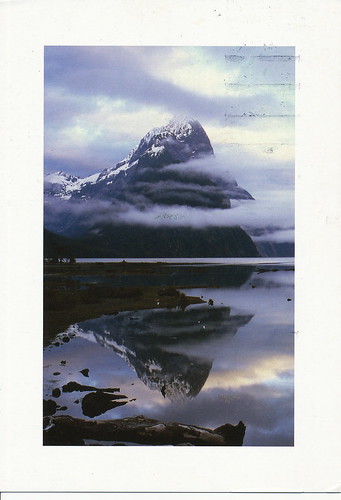 |
| RAS from Heather |
31/08/2013
Czech Republic - Pilgrimage Church of St John of Nepomuk at Zelená Hora
Year of Inscription: 1994
further Informations: http://whc.unesco.org/en/list/690
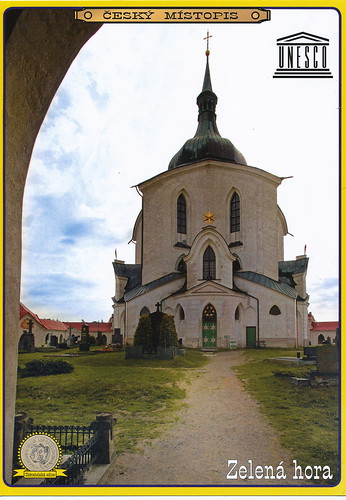 |
| AugustRR - rady |
 |
30/08/2013
Czech Republic - Kutná Hora: Historical Town Centre with the Church of St Barbara and the Cathedral of Our Lady at Sedlec
Year of Inscription: 1995
further Informations: http://whc.unesco.org/en/list/732
 |
| Big Unesco RR - 31 - miroslav |
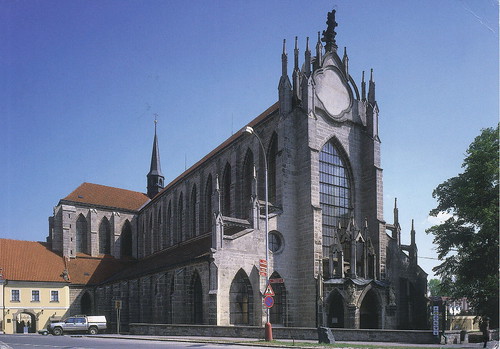 |
| RAS from Dominik |
 |
29/08/2013
South Africa - Richtersveld Cultural and Botanical Landscape
The 160,000 ha Richtersveld Cultural and Botanical Landscape of dramatic mountainous desert in north-western South Africa constitutes a cultural landscape communally owned and managed. This site sustains the semi-nomadic pastoral livelihood of the Nama people, reflecting seasonal patterns that may have persisted for as much as two millennia in southern Africa. It is the only area where the Nama still construct portable rush-mat houses (haru om ) and includes seasonal migrations and grazing grounds, together with stock posts. The pastoralists collect medicinal and other plants and have a strong oral tradition associated with different places and attributes of the landscape.
Date of Inscription: 2007
further Informations: http://whc.unesco.org/en/list/1265
Date of Inscription: 2007
further Informations: http://whc.unesco.org/en/list/1265
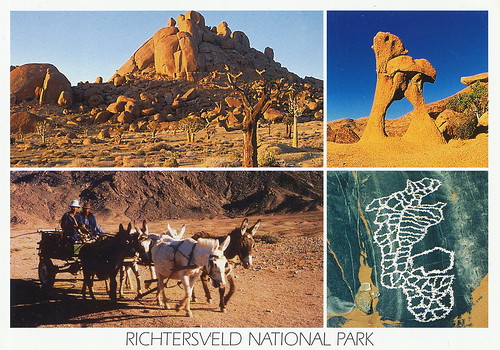 |
28/08/2013
Lesotho - South Africa - Maloti-Drakensberg Park
The uKhahlamba Drakensberg Park is renowned for its spectacular natural landscape, importance as a haven for many threatened and endemic species, and for its wealth of rock paintings made by the San people over a period of 4000 years. The Park, located in the Drakensberg Mountains, covers an area of 242,813 ha making it the largest protected area along the Great Escarpment of southern Africa.
With its pristine steep-sided river valleys and rocky gorges, the property has numerous caves and rock shelters containing an estimated 600 rock art sites, and the number of individual images in those sites probably exceeds 35,000. The images depict animals and human beings, and represent the spiritual life of this people, now no longer living in their original homeland. This art represents an exceptionally coherent tradition that embodies the beliefs and cosmology of the San people over several millennia. There are also paintings done during the nineteenth and twentieth centuries, attributable to Bantu speaking people.
Date of Inscription: 2000
Extension: 2013
further Informations: http://whc.unesco.org/en/list/985
Date of Inscription: 2000
Extension: 2013
further Informations: http://whc.unesco.org/en/list/985
 |
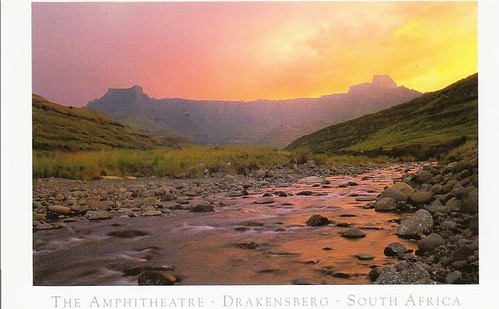 |
27/08/2013
South Africa - iSimangaliso Wetland Park
The ongoing fluvial, marine and aeolian processes in the site have produced a variety of landforms, including coral reefs, long sandy beaches, coastal dunes, lake systems, swamps, and extensive reed and papyrus wetlands. The interplay of the park's environmental heterogeneity with major floods and coastal storms and a transitional geographic location between subtropical and tropical Africa has resulted in exceptional species diversity and ongoing speciation. The mosaic of landforms and habitat types creates breathtaking scenic vistas. The site contains critical habitats for a range of species from Africa's marine, wetland and savannah environments.
Date of Inscription; 1999
further Informations: http://whc.unesco.org/en/list/914
Date of Inscription; 1999
further Informations: http://whc.unesco.org/en/list/914
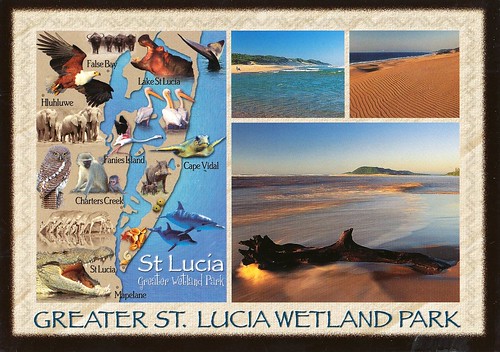 |
| private swap with chrystal_ali |
 |
| private swap with chrystal_ali |
26/08/2013
Sri Lanka - Sacred City of Kandy
This sacred Buddhist site, popularly known as the city of Senkadagalapura, was the last capital of the Sinhala kings whose patronage enabled the Dinahala culture to flourish for more than 2,500 years until the occupation of Sri Lanka by the British in 1815. It is also the site of the Temple of the Tooth Relic (the sacred tooth of the Buddha), which is a famous pilgrimage site.
Date of Inscription: 1988
further informations: http://whc.unesco.org/en/list/450
Date of Inscription: 1988
further informations: http://whc.unesco.org/en/list/450
 |
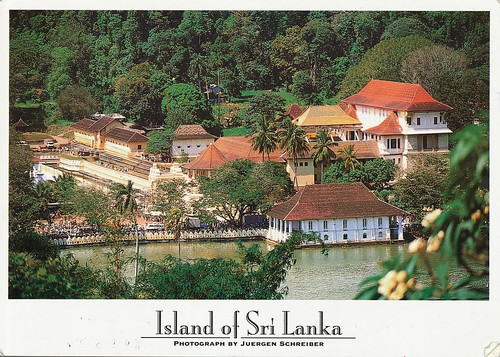 |
25/08/2013
Sri Lanka - Sacred City of Anuradhapura
This sacred city was established around a cutting from the 'tree of enlightenment', the Buddha's fig tree, brought there in the 3rd century B.C. by Sanghamitta, the founder of an order of Buddhist nuns. Anuradhapura, a Ceylonese political and religious capital that flourished for 1,300 years, was abandoned after an invasion in 993. Hidden away in dense jungle for many years, the splendid site, with its palaces, monasteries and monuments, is now accessible once again.
Date of Inscription: 1982
further Informations: http://whc.unesco.org/en/list/200
Date of Inscription: 1982
further Informations: http://whc.unesco.org/en/list/200
24/08/2013
Sri Lanka - Old Town of Galle and its Fortifications
Founded in the 16th century by the Portuguese, Galle reached the height of its development in the 18th century, before the arrival of the British. It is the best example of a fortified city built by Europeans in South and South-East Asia, showing the interaction between European architectural styles and South Asian traditions.
Date of Inscription: 1988
further Informations: http://whc.unesco.org/en/list/451
Date of Inscription: 1988
further Informations: http://whc.unesco.org/en/list/451
 |
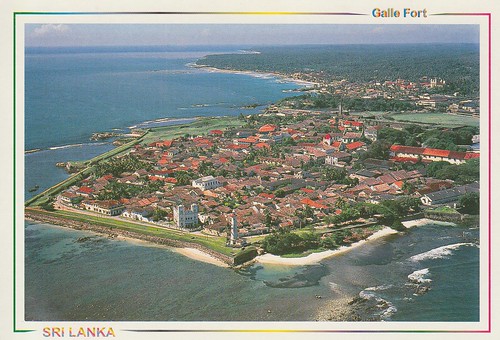 |
 |
23/08/2013
Sri Lanka - Golden Temple of Dambulla
A sacred pilgrimage site for 22 centuries, this cave monastery, with its five sanctuaries, is the largest, best-preserved cave-temple complex in Sri Lanka. The Buddhist mural paintings (covering an area of 2,100 m2 ) are of particular importance, as are the 157 statues.
Date of Inscription: 1991
further Informations: http://whc.unesco.org/en/list/561
Date of Inscription: 1991
further Informations: http://whc.unesco.org/en/list/561
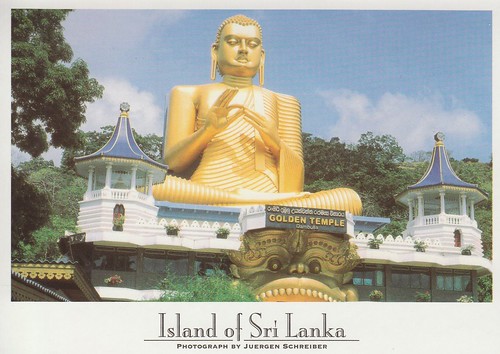 |
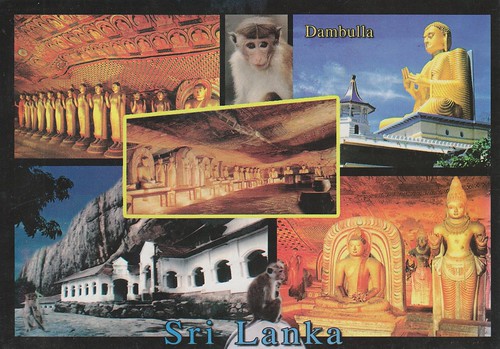 |
 |
22/08/2013
Sri Lanka - Central Highlands of Sri Lanka
Sri Lanka's highlands are situated in the south-central part of the island. The property comprises the Peak Wilderness Protected Area, the Horton Plains National Park and the Knuckles Conservation Forest. These montane forests, where the land rises to 2,500 metres above sea-level, are home to an extraordinary range of flora and fauna, including several endangered species such as the western-purple-faced langur, the Horton Plains slender loris and the Sri Lankan leopard. The region is considered a super biodiversity hotspot.
Date of Inscription: 2010
further Informations: http://whc.unesco.org/en/list/1203
Date of Inscription: 2010
further Informations: http://whc.unesco.org/en/list/1203
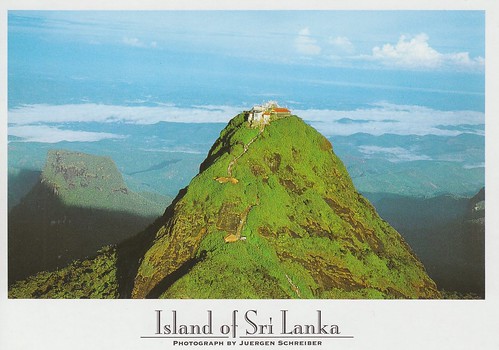 |
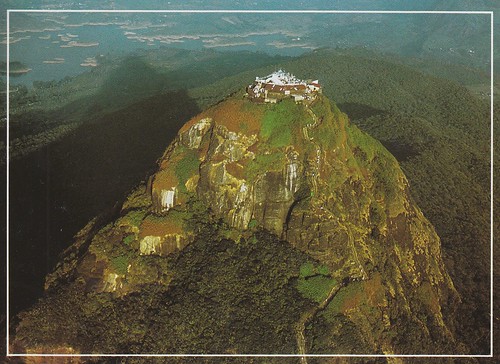 |
21/08/2013
Sri Lanka - Ancient City of Sigiriya
The ruins of the capital built by the parricidal King Kassapa I (477–95) lie on the steep slopes and at the summit of a granite peak standing some 370 m high (the 'Lion's Rock', which dominates the jungle from all sides). A series of galleries and staircases emerging from the mouth of a gigantic lion constructed of bricks and plaster provide access to the site.
Date of Inscription: 1982
further Informations: http://whc.unesco.org/en/list/202
Date of Inscription: 1982
further Informations: http://whc.unesco.org/en/list/202
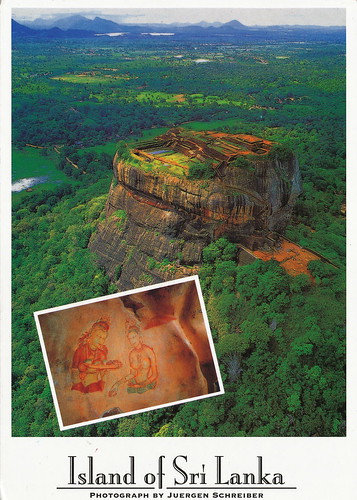 |
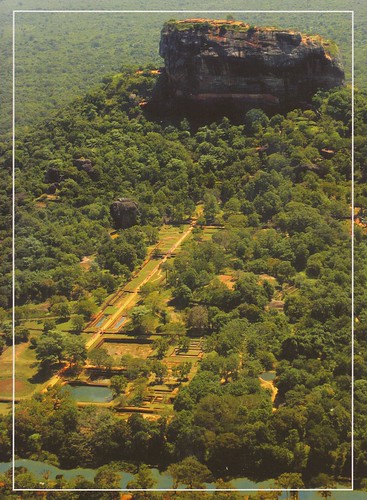 |
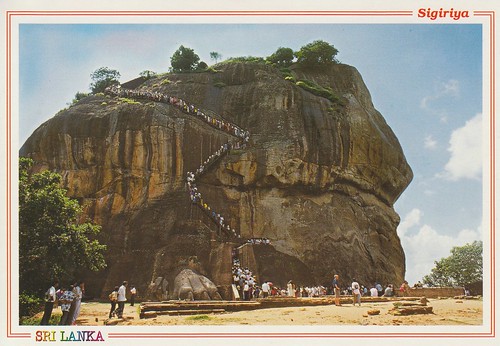 |
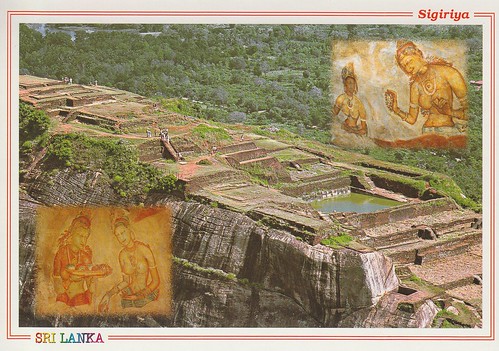 |
20/08/2013
Spain - Roman Walls of Lugo
The walls of Lugo were built in the later part of the 3rd century to defend the Roman town of Lucus. The entire circuit survives intact and is the finest example of late Roman fortifications in western Europe.
Date of Inscription: 2000
further Informations: http://whc.unesco.org/en/list/987
Date of Inscription: 2000
further Informations: http://whc.unesco.org/en/list/987
 |
| UnescoTag - Betariz |
19/08/2013
Spain - Teide National Park
ituated on the island of Tenerife, Teide National Park features the Teide-Pico Viejo stratovolcano that, at 3,718 m, is the highest peak on Spanish soil. Rising 7,500 m above the ocean floor, it is regarded as the world’s third-tallest volcanic structure and stands in a spectacular environment. The visual impact of the site is all the greater due to atmospheric conditions that create constantly changing textures and tones in the landscape and a ‘sea of clouds’ that forms a visually impressive backdrop to the mountain. Teide is of global importance in providing evidence of the geological processes that underpin the evolution of oceanic islands.
Date of Inscription: 2007
further informations: http://whc.unesco.org/en/list/1258
Visited in 1988
18/08/2013
Spain - Santiago de Compostela (Old Town)
This famous pilgrimage site in north-west Spain became a symbol in the Spanish Christians' struggle against Islam. Destroyed by the Muslims at the end of the 10th century, it was completely rebuilt in the following century. With its Romanesque, Gothic and Baroque buildings, the Old Town of Santiago is one of the world's most beautiful urban areas. The oldest monuments are grouped around the tomb of St James and the cathedral, which contains the remarkable Pórtico de la Gloria.
Date of Inscription: 1985
further Informations: http://whc.unesco.org/en/list/347
Date of Inscription: 1985
further Informations: http://whc.unesco.org/en/list/347
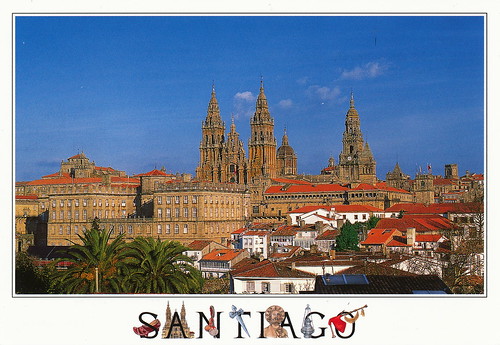 |
| private swap with sirisajoo |
 |
| official card - natalia |
Subscribe to:
Posts (Atom)
